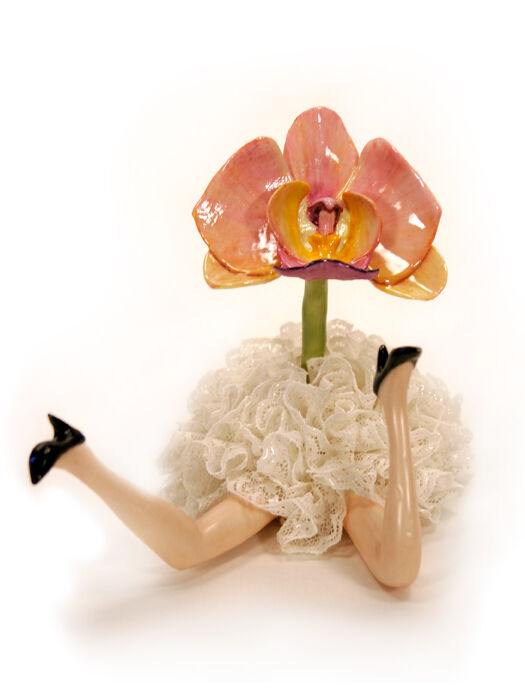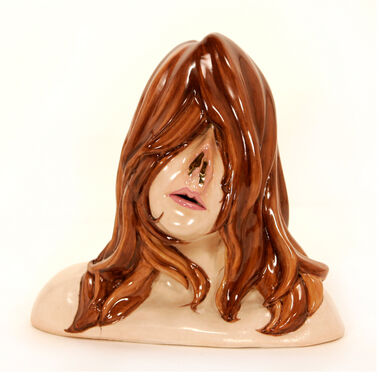Jessica Stoller: New Work
Feb 4th - Feb 27th, 2011
Jessica Stoller’s work is incredibly layered, rooted in historic technique and tradition while laden with contemporary ideas and content. Her sculptural works build on the ceramic tradition of the figurine, those ceramic tabletop sculptures known to every culture reflecting and recording social history, while economically serving as the cornerstone of the ceramic industry. The ceramic figurine is the perfect vehicle for Stoller to use in this current body of work. Historically, figurines were representative of the social mores of their time, reinforcing the gender roles, stereotypes, expectations and values then practiced.
Stoller’s work is accomplished in technique and conceptually rich and has been since she was an undergraduate student creating sculptures out of cigarette butts and tampons, each individually cast in ceramic using molds of her own making. One can’t look at her sculpture and not be impressed with the exquisite craftsmanship and detail. Purposeful, it at first disarms viewers taken by the intimate scale and meticulous detailing. This may be most true in works using a historic technique known as lace draping. Stoller will use fabric or netting as the foundation, an armature of sorts, for a coating of slip, liquid clay. During the firing process, the material burns away, the clay now remaining in its place, a replica of the original used in its creation. Stoller’s perfection and mastery of this technique is staggering, though this fascination soon gives way to the content, the unease the works evoke building inside with each unexpected oddity discovered .
Stoller laid the foundation for this current body of work while in Graduate School at The Cranbrook Academy of Art. There she created mixed media sculptures representative of girls’ toys and dolls that pointedly questioned and challenged many of the stereotypical messages young girls learn; those gender specific ideals that, for many, are damaging and untrue. In this body of work, the girls depicted in earlier pieces are now women, these sculptures exploring idealized femininity. Stoller challenges these idealized qualities with her hybridized women in brilliant and elaborate and staged scenarios. Using processes such as china painting and molding/casting ceramics, historically viewed to be “woman’s work” and associated with hobbyists, Stoller creates, as she says, “wayward and transgressive female figures. Incorporating period fashion, powerful historic women, and imaginative scenarios, my works deals with notions of costume, sexuality and the subjugation of the female body. The notion of the decorative as weak and inherently female is subverted as the figures depicted are purposely innocent and sexual, self sacrificing and violent, powerful and unaware of the power they posses.”
Sign up for our newsletter.
Stay up to date on all things Clay Studio with announcements, invitations and news delivered straight to your inbox.



































